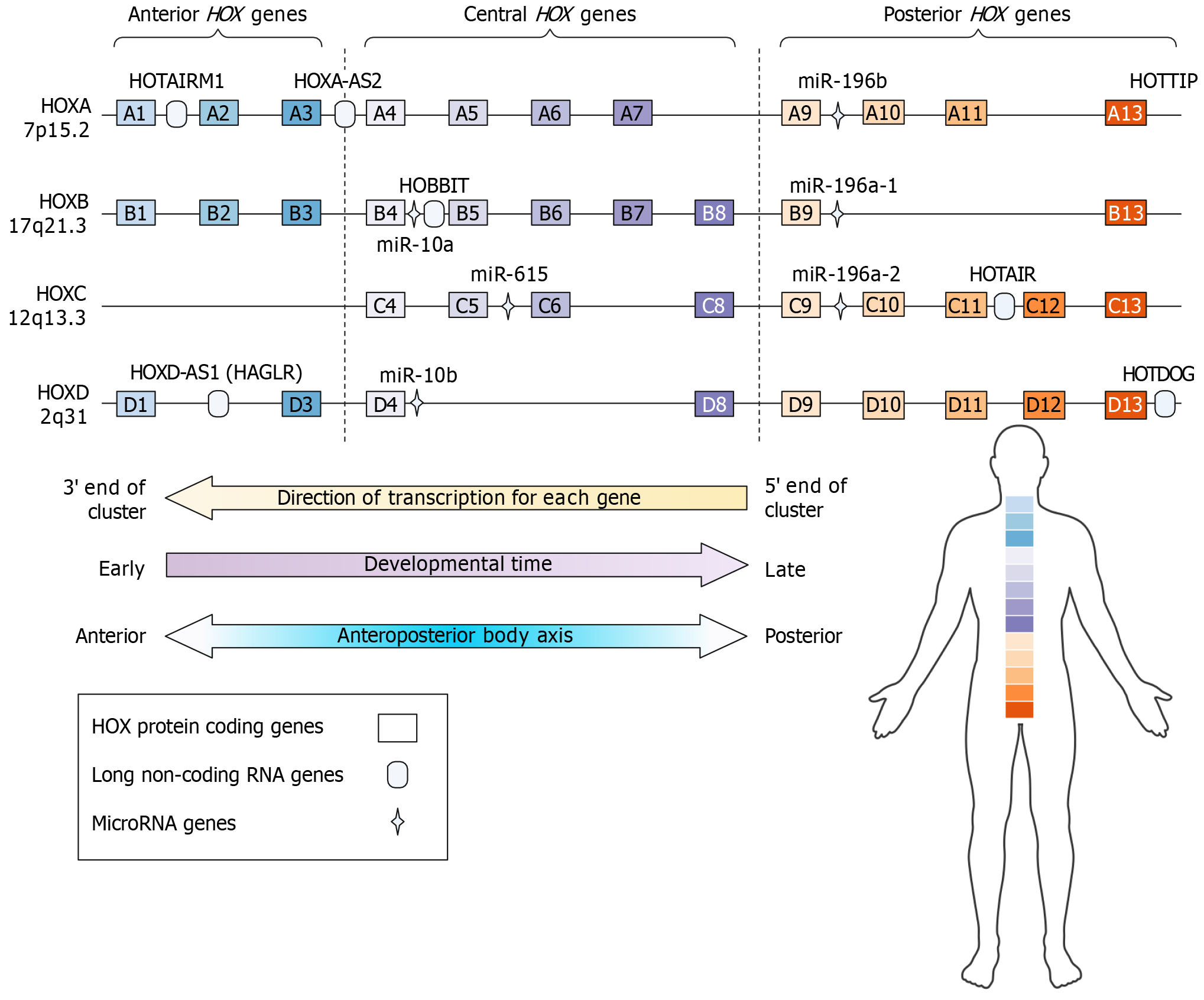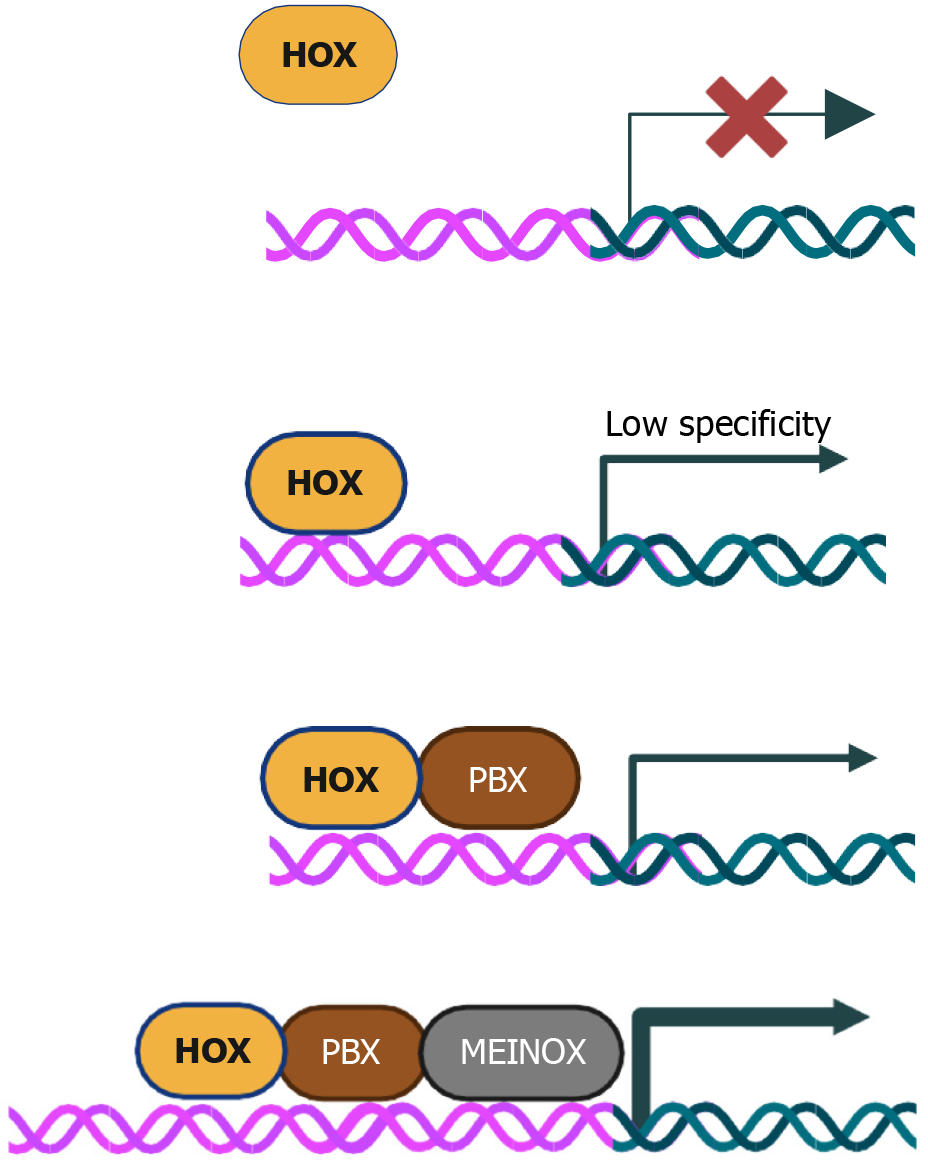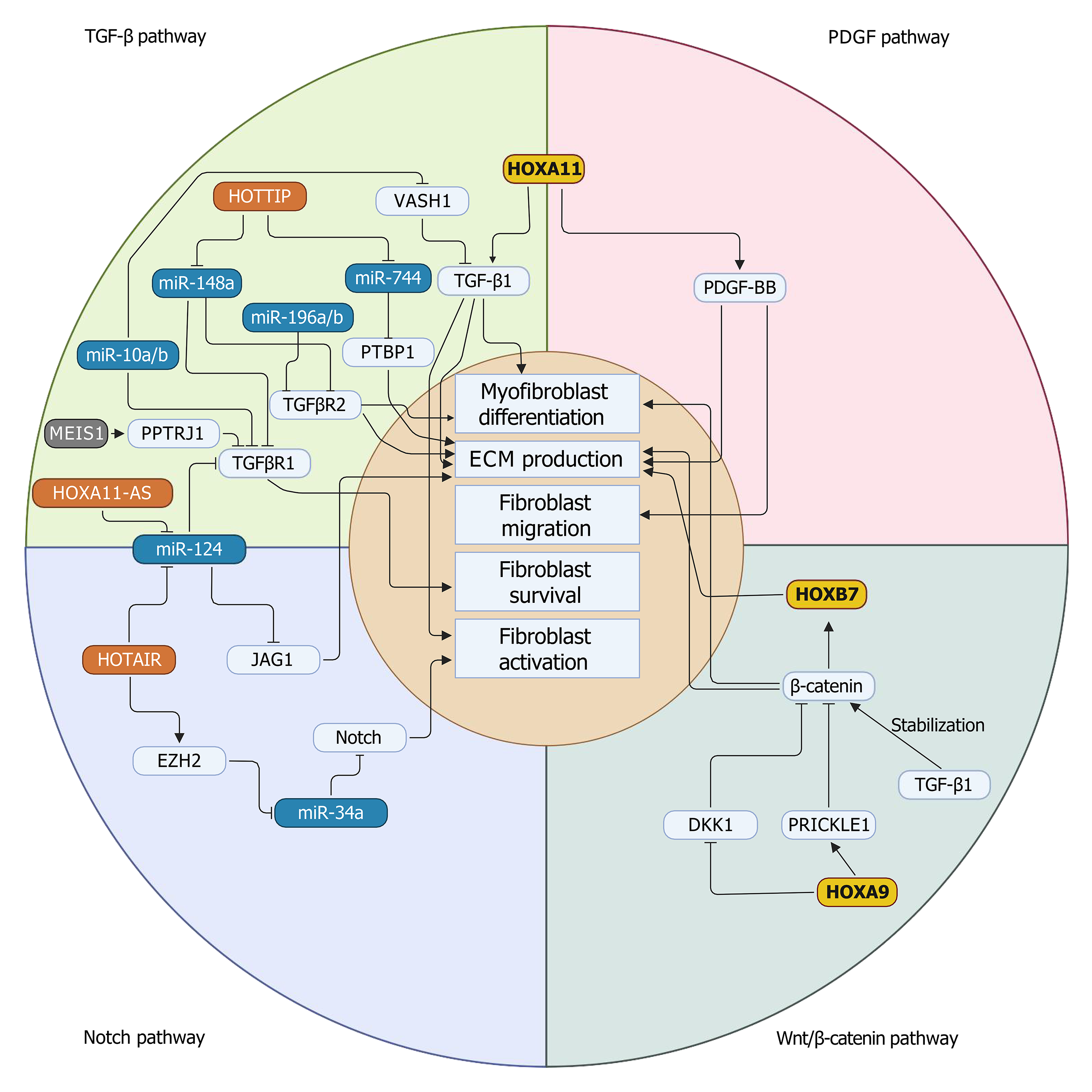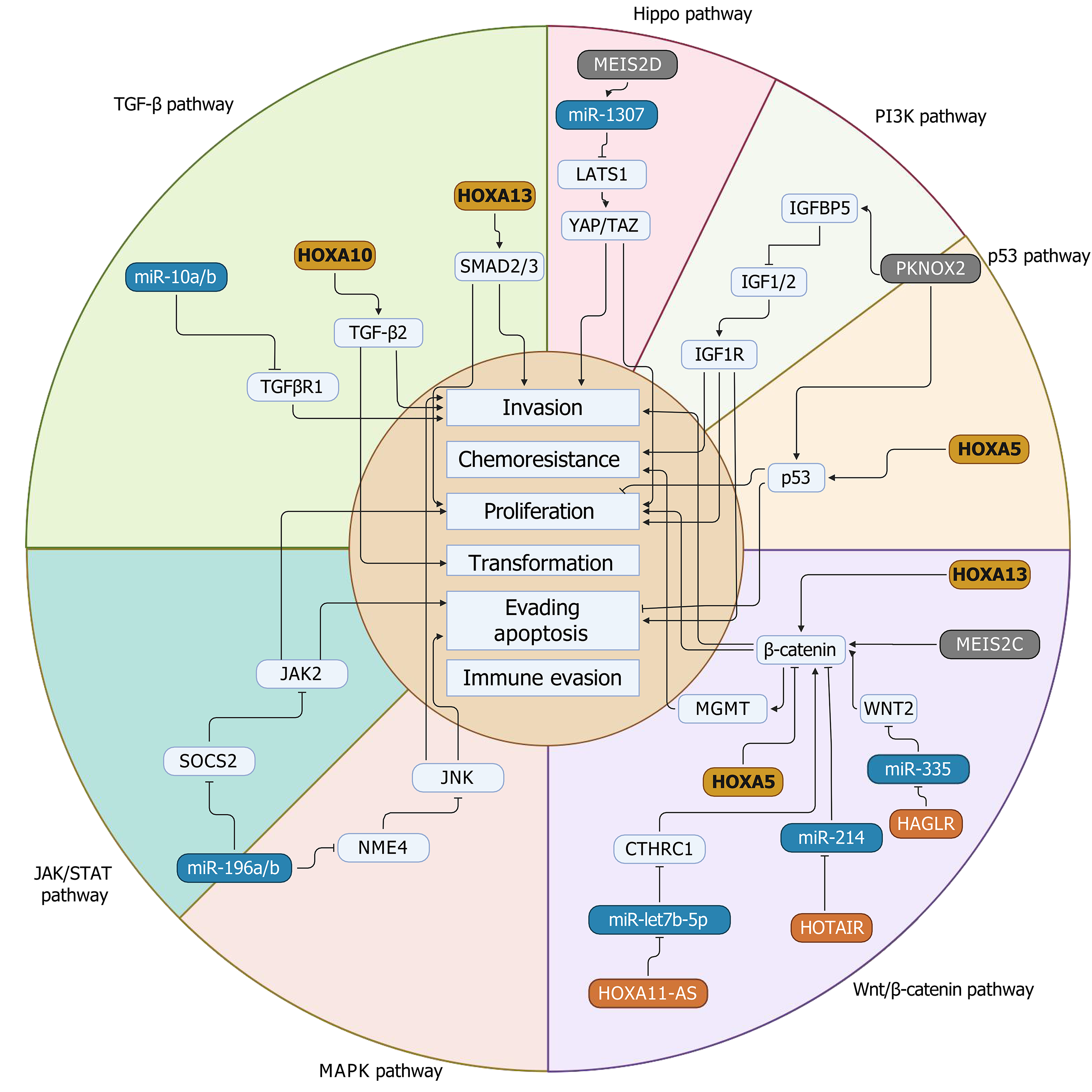Copyright
©The Author(s) 2025.
World J Stem Cells. Sep 26, 2025; 17(9): 109102
Published online Sep 26, 2025. doi: 10.4252/wjsc.v17.i9.109102
Published online Sep 26, 2025. doi: 10.4252/wjsc.v17.i9.109102
Figure 1 Organization and collinearity of human HOX gene clusters.
This figure illustrates the genomic organization and transcriptional regulation of human HOX gene clusters (HOXA, HOXB, HOXC, HOXD). Each cluster is arranged linearly, displaying protein-coding HOX genes (rectangles), long non-coding RNA genes (rounded rectangles), and microRNA genes (diamonds). The transcriptional direction of genes within each cluster is indicated, highlighting the spatiotemporal collinearity characteristic of HOX genes, whereby genes located more 3’ are expressed earlier in development and in more anterior body segments, while genes positioned towards the 5’ end are expressed later and in progressively posterior regions. This principle, known as the “collinearity” rule, is represented by arrows depicting the relationships between the direction of transcription, developmental timing, and the anteroposterior positioning along the human body axis. Created in BioRender.
Figure 2 HOX-PBX-MEINOX DNA binding affinity and transcriptional effectiveness.
HOX proteins form stable dimers with PBX cofactors, which exhibit limited transcriptional activity. The addition of MEINOX cofactors (MEIS and PKNOX), facilitating the formation of HOX-PBX-MEINOX trimers, significantly enhances both the DNA-binding specificity and transcriptional output[32,34,195,196]. In this review, PBX proteins are considered a constant, essential component required for complete functional activity, while HOX and MEINOX proteins are treated as dynamic variables reflecting biological complexity and disease-specific regulatory states. Created in BioRender.
Figure 3 HOX-MEINOX molecules’ involvement in fibrosis-related pathways.
HOX (yellow boxes) and MEINOX (gray boxes), associated long non-coding RNAs (orange boxes) and HOX-associated microRNAs (blue boxes) are involved in different steps in fibrosis-related signaling pathways, resulting in various fibrosis-related responses. Created in BioRender. TGF: Transforming growth factor; PDGF: Platelet derived growth factor; VASH: Vasohibin; PTBP1: Polypyrimidine tract binding protein 1; JAG1: Jagged1; EZH2: Enhancer of zeste homolog 2; ECM: Extracellular matrix; DKK1: Dickkopf-1.
Figure 4 HOX-MEINOX molecules’ involvement in cancer-related pathways.
HOX (yellow boxes) and MEINOX (grey boxes), HOX associated long non-coding RNAs (orange boxes) and HOX-associated microRNAs (blue boxes) are involved in different steps in cancer-related signaling pathways, partaking in suppression or maintenance of different cancer hallmark processes. Created in BioRender. TGF: Transforming growth factor; PI3K: Phosphatidylinositol 3-kinase; LATS1: Large tumor suppressor 1; YAP: Yes-associated protein; TAZ: Transcriptional co-activator with PDZ-binding motif; IGFBP5: Insulin-like growth factor-binding protein 5; IGF: Insulin-like growth factor; JAK2: Janus kinase 2; SOCS2: Suppressors of cytokine signaling 2; JNK: C-Jun N-terminal kinase; NME4: Nucleoside diphosphate kinase 4; STAT: Signal transducer and activator of the transcription; MGMT: O6-methylguanine-methyltransferase; CTHRC1: Collagen triple helix repeat containing-1; MAPK: Mitogen-activated protein kinases.
- Citation: Keleş M, Gunel-Ozcan A. HOX and MEINOX in cellular plasticity, fibrosis, and cancer. World J Stem Cells 2025; 17(9): 109102
- URL: https://www.wjgnet.com/1948-0210/full/v17/i9/109102.htm
- DOI: https://dx.doi.org/10.4252/wjsc.v17.i9.109102
















